Nutrition and Cheerleading Performance
Next Level Podcast with Host Tavis Piattoly, MS, RD, LD
Today's podcast features Karen Lew Feirman, DHSc, LAT, ATC and Jamie Mascari Meeks, MS, RD, LDN, CSSD. Karen joined Varsity University as the Dean in October of 2014. Jamie is a 2009 graduate from Louisiana State University with a Bachelor’s Degree in Nutritional Science (Dietetics). Both have utilized sports nutrition in cheerleading for injury prevention and have used food as an aid for recovery.
Karen Lew Feirman
Karen joined Varsity University as the Dean in October of 2014. Over the past 15 years, Karen served in a variety of capacities at Southeastern Louisiana University and the University of Miami. Most recently, she served as the Clinical Coordinator of the Athletic Training Program at the University of Miami. She is involved with the Commission on Accreditation of Athletic Training Education, the Louisiana Athletic Trainers Association, the Southeast Athletic Trainers Association, the National Athletic Trainers Association and the USA Cheer Safety Council.
In 1996, Karen received her Bachelor of Science degree and Certification for K-12 Health and Physical Education at the University of New Orleans in New Orleans, Louisiana. Karen earned her Master of Education degree in Human Performance with an emphasis in Exercise Science in 1997 from the University of Louisiana at Monroe, Monroe, Louisiana. She is currently pursuing a Doctorate in Health Sciences from Nova Southeastern University.
Karen is truly committed to seeing the profession of Athletic Training continue to grow and flourish as well SEATA and the NATA. Over the past twelve years, Karen has served on a variety of committees at the state, regional, and national level. Her committee involvement in SEATA has been with the Student Symposium. She has presented at the Student SEATA symposium on a consistent basis and has served as the coordinator of sponsorships the past four years. In addition to her involvement with the Student SEATA meeting, she is currently serving as the Co-chair of the SEATA educators meeting.
Karen’s interests include learning and teaching styles in athletic training, safety and injury prevention in cheerleading, athlete education, and drug and alcohol use and abuse among college students and student athletes. Karen has several publications including, Athletic Training Exam Review: “A Student Guide to Success”, Fourth Edition, and has been published by the NATA and Cramer Athletics for her work in preventing and reducing injuries in cheerleading. She regularly participates as an athletic trainer and medical support staff for Varsity Spirit, LLC including the National Collegiate Cheer and Dance Championships, and the London New Year’s Day Parade.
Karen is certified as an athletic trainer by the Board of Certification. She is licensed as an athletic trainer in Louisiana and Florida. She also serves as an Instructor for the American Heart Association.
In this podcast you will learn:
1. How and when she got involved with Varisty and her current role?
2. What type of educational programs Varsity offers for athletes
3. Is Cheerleading one of the most dangerous sports and what does the research say about the risk of traumatic injury?
4. What can be done to reduce the risk of injuries for Cheerleaders
5. The role of the Athletic Trainer in helping treat and reduce the risk of Cheer injuries
6. What is one rule that could be implemented now that could make cheerleading reduce the injury risk?
Jamie Mascari Meeks
Jamie Meeks is a 2009 graduate from Louisiana State University with a Bachelor’s Degree in Nutritional Science (Dietetics). As a former LSU Cheerleader, Jamie had the chance to cheer for some of LSU's greatest sport teams including the 2007 LSU Football National Championship team, the 2006 SEC Champions and Final Four Men's Basketball team, and 2007 Final Four Women’s Basketball team. She completed her Dietetic Internship at the University of Arkansas for Medical Sciences. After receiving her Registered Dietitian (RD) license/registration, Jamie returned to LSU and completed her Master's Degree in 2011 in Kinesiology with a concentration in Exercise Physiology. She is a Board Certified Specialist in Sports Dietetics (CSSD) and worked as the first full-time Sports Dietitian for LSU Athletics from 2011-2014. At LSU, Jamie not only fulfilled the team and individual nutrition/dietary needs of teams, but she also created the Undergraduate Sports Nutrition Internship, introduced and oversaw three Athletic Fueling Stations, assisted with the Athletic Training Table Meals, and worked as an integral member of the planning team for the Tiger Athletic Nutrition Center. Jamie currently works as the Director of Sports Nutrition for the New Orleans Saints (NFL) and Pelicans (NBA). She works to help integrate healthy choices and optimal fueling into the daily training routines for all Saints and Pelicans athletes. She works closely with the teams’ Athletic Trainers, Strength Coaches, and Team Physicians in addition to providing individual counseling and Medical Nutrition Therapy that focuses on individual performance fueling strategies, hydration, and proper supplementation. Jamie oversees the weight room nutrition recovery station and offers team nutrition education, home and travel meal/menu management, and body composition analysis. Jamie is a member of the Academy of Nutrition and Dietetics, Louisiana Dietetic Association, Collegiate and Professional Sports Dietitians Association, and the Sports Cardiovascular and Wellness Nutrition dietetic practice group.
In this podcast you will learn:
1. When did she develop an interest in becoming a Cheerleader and what was her collegiate career like
2. The intensity of cheerleading and do the nutritional needs differ for Cheerleaders compared to athletes in other contact sports
3. The difference in nutritional requirements between cheerleaders and football players
4. An overview of a cheerleading practice in regards to energy expenditure and practice duration 5. Maintaining weight as a cheerleading and does that add more stress
6. The biggest nutritional challenges a cheerleader has to face. Differences between cheering in high school vs college.
7. 3 nutrition goals that you would tell a cheerleader today that will make a positive impact on their cheer performance.
8. Foods that help cheerleaders heal faster after an injury
9. Foods to avoid that may slow the healing process all 15 sports
Podcast Transcript
0:00 Tavis Piattoly Introduction
Karen Lew Feirman:
3:32 How and when she got involved with Varsity and her current role?
- She has been with Varsity for 22 years. She got involved with Varsity in 1993. Once in her role she realized how cheerleaders' needs are similar to other athletes.
- She worked as a seasonal and part-time employee.
- She was offered a full-time position to work on safety and compliance with Varsity Spirit. She also served as the director of education.
- Varsity University is promoting safety among cheerleaders and parent education.
- Her goal is to reduce injury and promote safety at all levels.
5:54 What type of educational programs Varsity offers for athletes
- At all Varsity camps, when an athlete, coach, or parent attends camp. Varsity educates everyone on safety.
- Developed safety programs for cheerleaders at all levels and expanded safety programs for coaches.
- Some work has been done with the national high school and NCAA to mandate education adherence at both levels.
- Encouraging all coaches to become American Association of Cheerleading Coaches & Administrators (AACCA) certified.
- Note: since this podcast has been recorded. AACCA has become USA Cheer.
- We have all cheerleaders and coaches complete a comprehensive safety awareness education session at camp.
- We encourage all coaches to go to a head injury prevention training.
- We emphasize a progressive approach of educating when approaching difficulty of skills.
- We provide education to parents for when they are looking for cheer coaches and programs to mitigate any risk or associated injury for the athlete.
- We also offer webinars on Varsity University and coaching seminars across the USA.
9:32 Is Cheerleading one of the most dangerous sports and what does the research say about the risk of traumatic injury?
- Cheerleading has less ER visits than other women's sports.
- Currently, cheerleading is the fourth most safe high school activity.
- Sometimes the media or current data is not always correct.
- We want people to follow these safety rules for cheerleaders to avoid injury.
11:59 What can be done to reduce the risk of injuries for Cheerleaders
- There is an inherent risk of injury. However, Varsity’s goal is to raise awareness, increase safety awareness, education athletes and coaches.
- Nutrition, wellbeing, proper conditioning, and proper training can all reduce the risk of injury.
14:08 The role of the Athletic Trainer in helping treat and reduce the risk of cheer injuries
- All high schools should have certified athletic trainers. They could help to treat and educate athletes on injury and injury prevention.
17:15 What is one rule that could be implemented now that could make cheerleading reduce the injury risk?
- New rules that have been recently implemented to reduce injury risk.
- Example: Double downs, a stunt, are not allowed to be done by high school cheerleading teams. This is because research was showing this is where athletes were getting injured or having concussions.
- Rules are constantly reviewed to make cheerleading safe.
Jamie Mascari Meeks:
24:42 When did she develop an interest in becoming a Cheerleader and what was her collegiate career like?
- She wanted to be a cheerleader since elementary school. She cheered at LSU for four years and was caption for three years.
26:34 The intensity of cheerleading and do the nutritional needs differ for Cheerleaders compared to athletes in other contact sports.
- The same concepts apply – good, balance meals throughout the day
- Similarly, cheerleaders need to plan the timing of their meals to maintain their energy and strength and to promote recovery.
- Cheerleading is a year-long sport with no off-season.
- Cheerleaders may have lower calorie requirements compared to other sports. However, it is important for them to intake appropriate amounts of carbohydrates, protein, and other nutrients.
28:16 Training regimen for cheerleaders to prepare for a competition
- Because of the variety of skills within one cheerleading routine, there are many different types of training. For example, body weight conditioning, weight lifting to build lean muscle, practicing your cheer skills (tumbling, stunting, etc.), cardio exercise to build stamina.
30:00 The difference in nutritional requirements between cheerleaders and football players.
- Because of the different body types and nutritional goals, the amount of calories consumed is a difference between the two types of athletes.
- Cheerleaders' calorie requirements are most likely lower than football players due to their difference in body masse.
31:35 Maintaining weight as a cheerleading and does that add more stress
- There is no weight requirement. The goal is to have a healthy body composition and to maintain a healthy weight, energy, and strength.
32:44 The biggest nutritional challenges a cheerleader has to face. Differences between cheering in high school vs. college.
- Biggest challenge is the appearance factor and body weight because cheerleaders do go out in front of a crowd.
- There are a lot of misconceptions when it comes what to eat to achieve a healthy body weight. So, another challenge is what sports nutrition actually is.
- The difference between cheering in high school vs. college: The challenge starts to appear in high school, but becomes more profound in college.
- She worked with the LSU Spirit Squad (cheerleaders and dancers) and educated them on different sports nutrition topics such as the importance of nutrition, why these athletes do not need to cut calories/weight, and healthy body composition.
35:51 3 nutrition goals that you would tell a cheerleader today that will make a positive impact on their cheer performance.
- Plan ahead to make sure you know what you’re eating and not skipping meals before practice, on the road to competitions, etc.
- Eat adequate calories to maintain your energy and stamina. Also, to improve your skills.
- Do not crash diet. If you do have a weight goal that is okay, but you should meet with a registered dietitian.
- Eat with a purpose. Fuel with the thought of how you are trying to make yourself a better cheerleader.
38:21 Foods that help cheerleaders heal faster after an injury.
- Foods high in phytonutrients/antioxidants that help fight inflammation.
- Example: blueberries, blackberries, raspberries
- Fish, such as salmon and tuna are high in omega 3 fatty acids that are heart healthy
- Nut butters, such as peanut or almond butter.
- All fruit and vegetables
- Tart cherry juice. Helps fight inflammation and help healing process
39:48 Foods to avoid that may slow the healing process.
- Foods high in trans or saturated fats
- Baked goods → pastries, cookies, cakes, croissants
- Packaged snacks → cookies and chips
- Fried foods
- High fat meats → bacon and sausage
- Excess of refined sugars, such as white bread and candies
Download Infographic
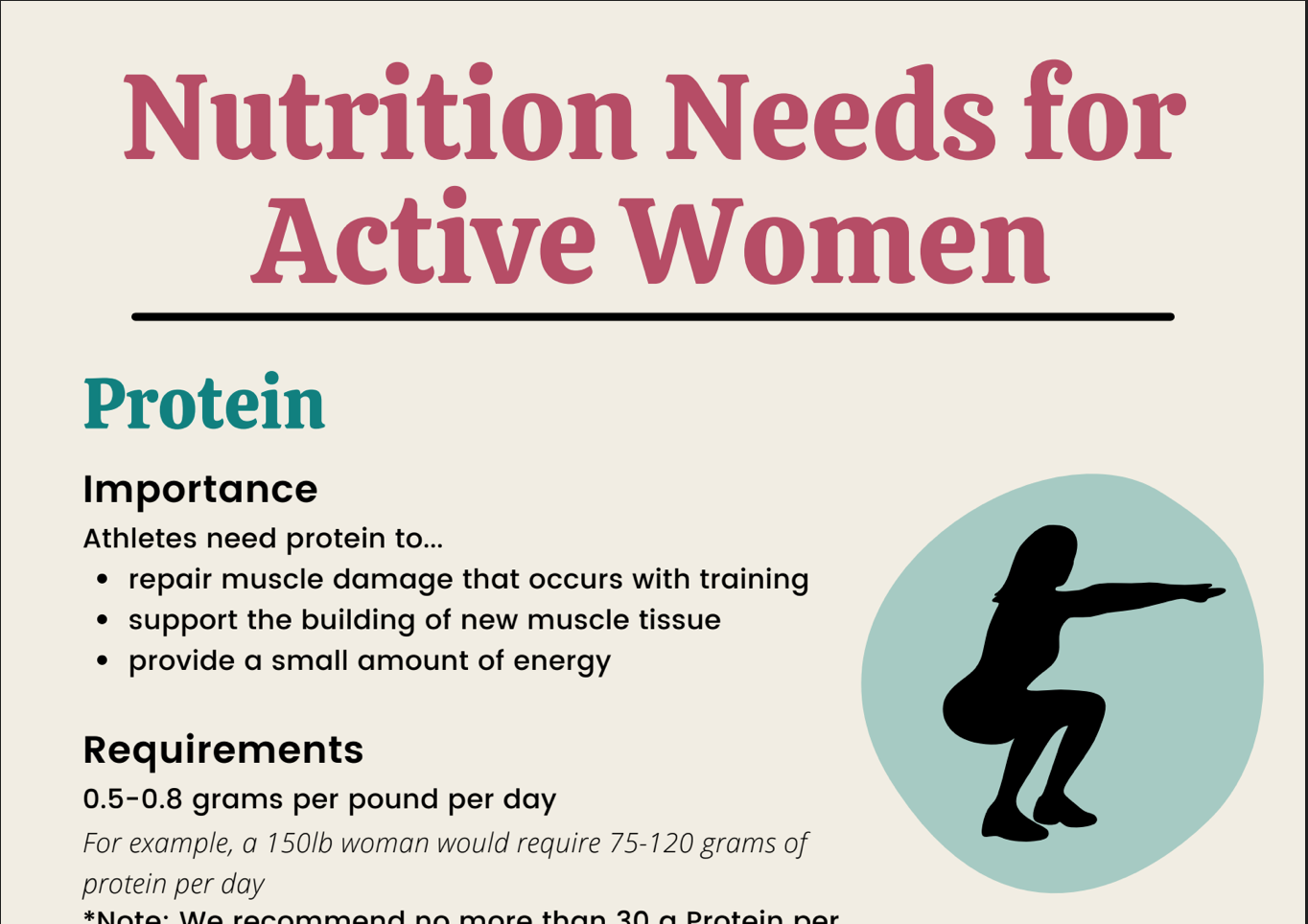


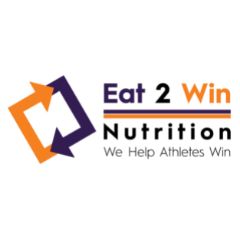
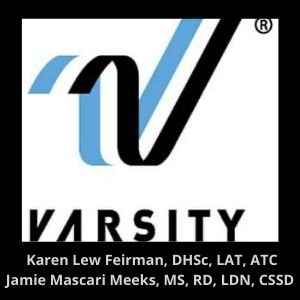
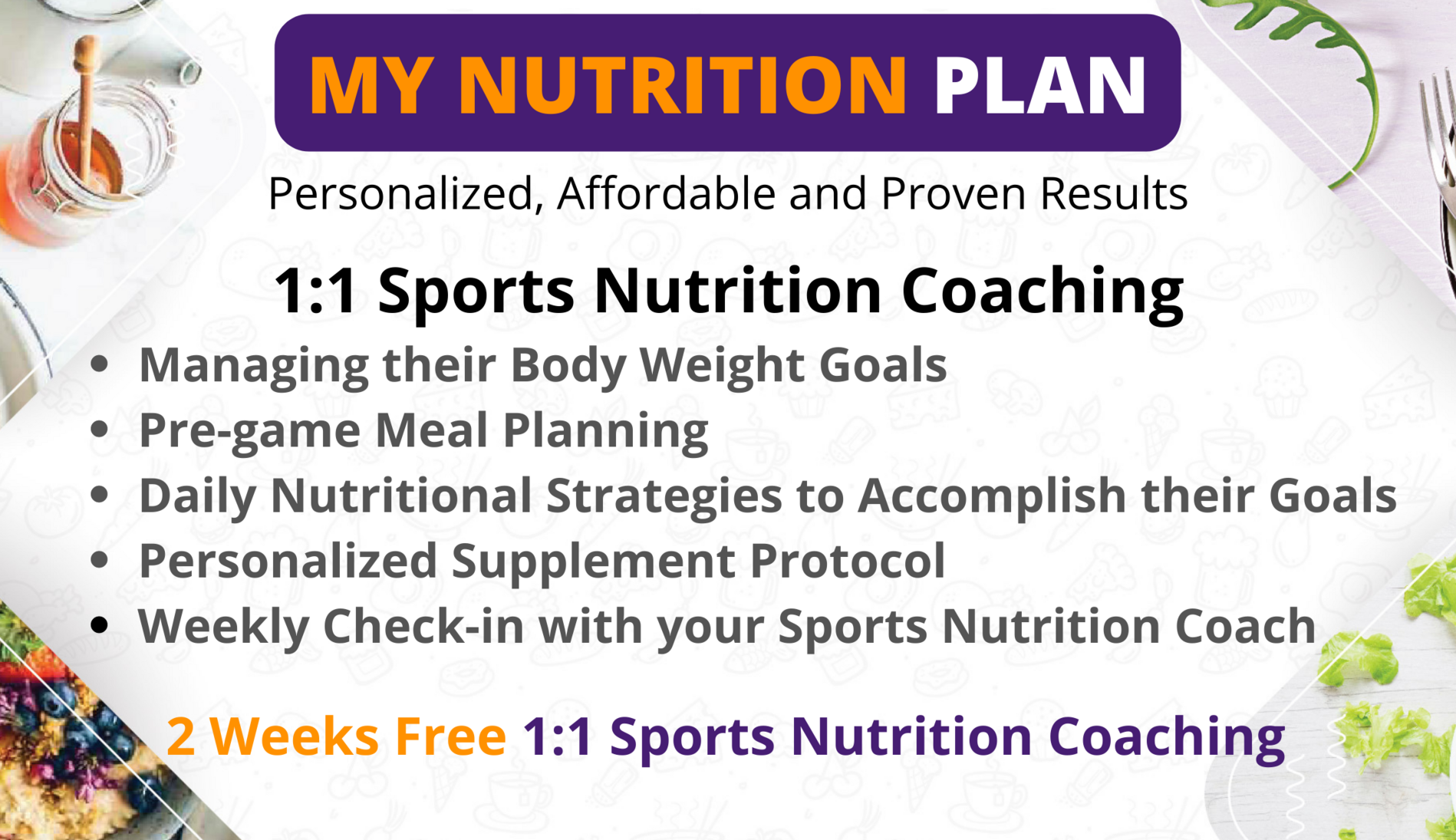


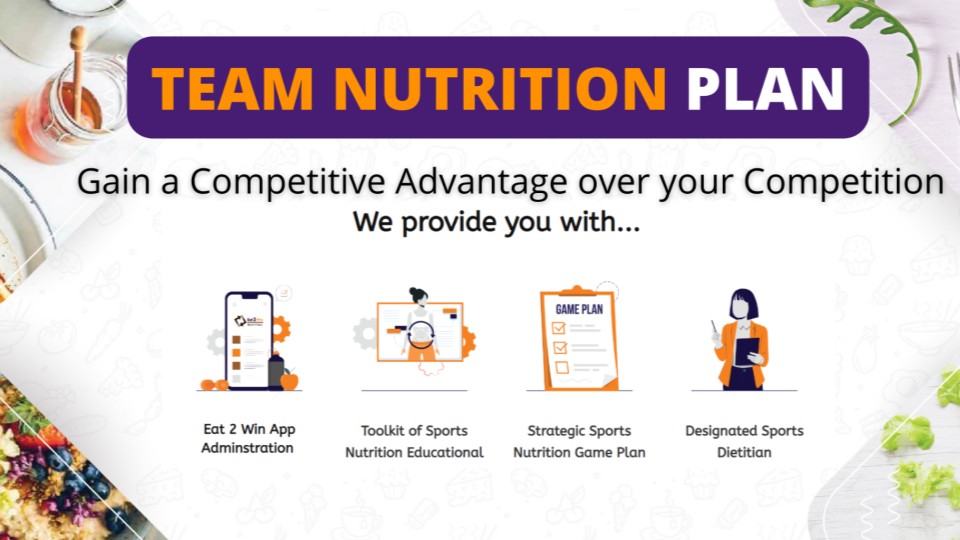
Facebook comments